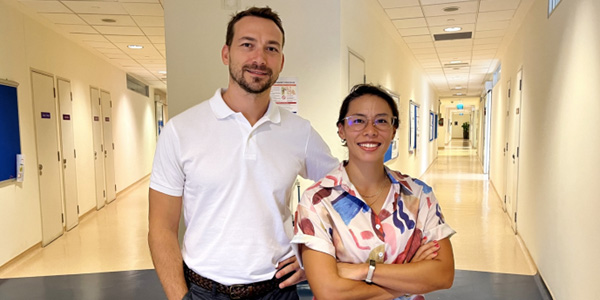News
Overcoming barriers in brain cancer
When your body is fighting a deadly disease, the last thing you’d want is to mount defenses against the drugs meant to help you combat the disease. Yet, this is precisely what happens in glioblastoma multiforme (GBM), a deadly brain cancer with poor treatment options.
The brain is guarded by a unique and specialised vasculature known as the blood-brain barrier (BBB), which is highly selective when it comes to deciding whether molecules – such as chemotherapeutic drugs – can pass between the blood to the brain.
Dr. Andrea Pavesi’s team, along with collaborators from the Institute of Molecular and Cell Biology (IMCB) and the National Neuroscience Institute (NNI), have published a new study in the journal Small. Their research reveals that changes to the blood-brain barrier (BBB) caused by cancer can reduce the effectiveness of chemotherapeutic drugs in treating brain tumors. The team made this finding by using their innovative microfluidic device that simulates the human tumour microenvironment and the BBB.

Dr. Andrea Pavesi and Dr. Maxine Lam
Specifically, the team recreated a system that contains both the BBB and tumour spheroids, which can mimic the vascularisation as well as the tumours’ morphology and invasive properties. With this scalable 3D model, the team can now rapidly screen for novel chemotherapeutic drugs and examine how interactions between tumours and the BBB influence how well a drug penetrates the BBB to access the tumour.
“2D assays tend to overestimate drug efficacy – many drugs that work in 2D assays fail in animal models, and we end up circling back to 2D assays. Advanced 3D models like ours can help identify at the pre-animal stage how the tumour microenvironment affects drug sensitivity and hence minimise failure rate in animal models,” explains Dr Maxine Lam, Senior Scientist and lead author of the study.
In addition, Dr Lam also highlights how their model saves overall time and cost as using animal models can be both challenging and costly. “We also reduce the ethical issues associated with therapy development,” adds Dr Lam.
Furthermore, the microfluidic device is also optically clear, giving the researchers unprecedented access for live imaging of tumour progression across critical biological events and interactions between the tumour and BBB.
This new GBM-BBB model allows us to both answer fundamental biological questions and help develop better therapies. This system is currently being optimised for commercial applications, which the team hopes will bridge the gap between 2D assays and animal studies, thereby facilitating a more cost-effective, efficient, and accurate screening of new therapies.
A*STAR celebrates International Women's Day

From groundbreaking discoveries to cutting-edge research, our researchers are empowering the next generation of female science, technology, engineering and mathematics (STEM) leaders.
Get inspired by our #WomeninSTEM
.png?sfvrsn=c3edc68e_6)